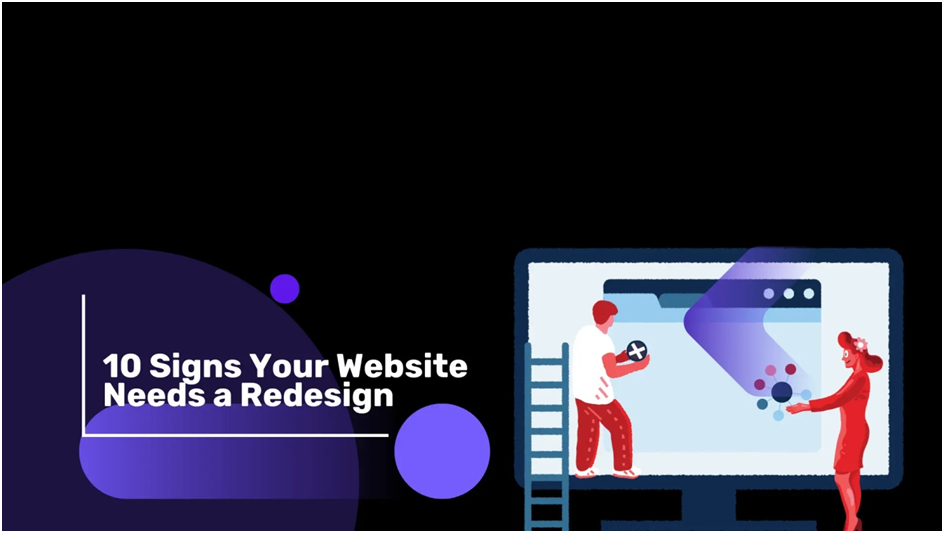10 Signs Your Website Needs a Redesign

A website is more than just a digital storefront; it’s the face of your brand, the first impression for potential customers, and often the deciding factor in whether users engage with your business. But even the best websites need a facelift from time to time. Technology, design trends, and user expectations evolve rapidly, leaving outdated websites behind.
If your website isn’t performing as expected or you’re unsure whether it’s time for a change, here are 10 signs your website needs a redesign to remain competitive and relevant.
1. Outdated Design Aesthetics
Design trends change over the years, and what looked modern five years ago may now seem antiquated. If your website feels like a relic of the past with outdated fonts, clunky navigation, or uninspiring visuals, it’s time for a redesign. A fresh, modern design instantly signals to users that your brand is current, credible, and professional.
Solution:Incorporate contemporary design elements such as minimalist layouts, bold typography, and high-quality visuals. Align your design with current trends without compromising functionality.
2. Poor Mobile Responsiveness
With mobile devices accounting for over half of all internet traffic, having a responsive website is non-negotiable. If your site doesn’t adapt seamlessly to smartphones and tablets—resulting in stretched images, tiny text, or broken navigation—it’s time for a redesign.
Solution:Adopt a mobile-first design approach to ensure an optimal user experience across all devices. Use responsive design techniques to make your site intuitive and visually appealing on smaller screens.
3. Slow Loading Speeds
In the fast-paced digital age, users expect websites to load in under three seconds. A slow-loading site frustrates visitors, increasing bounce rates and negatively impacting search engine rankings. If your website struggles with speed, you’re losing both traffic and credibility.
Solution:Optimize your website by compressing images, minifying CSS and JavaScript files, and leveraging caching tools. A redesign can incorporate performance-enhancing elements for faster load times.
4. High Bounce Rates
A high bounce rate indicates that visitors leave your website shortly after arriving, often because the site doesn’t meet their expectations or isn’t user-friendly. Outdated designs, irrelevant content, or a confusing layout could be driving users away.
Solution:Analyze user behavior using tools like Google Analytics and identify the pain points causing visitors to leave. A redesign can improve navigation, content relevance, and overall usability to keep users engaged.
5. Inconsistent Branding
Your website is a direct reflection of your brand. If it doesn’t align with your current branding—whether it’s due to outdated logos, mismatched colors, or inconsistent messaging—it may confuse or alienate your audience.
Solution:Update your website to reflect your brand’s voice, values, and visual identity. Consistency across all touchpoints builds trust and enhances recognition.
6. Ineffective Call-to-Actions (CTAs)
If your CTAs are outdated, unclear, or fail to encourage user engagement, you’re missing out on valuable leads and conversions. CTAs should be prominent, compelling, and easy to act upon.
Solution:Redesign your CTAs with clear, action-oriented language and ensure they stand out visually. Use contrasting colors and strategic placement to guide users toward desired actions.
7. Difficult Navigation
A confusing or overly complicated navigation structure frustrates users and discourages them from exploring your site. If visitors can’t easily find what they’re looking for, they’re unlikely to stay.
Solution:Redesign your navigation to be intuitive and user-friendly. Include clear menus, search functionality, and logical categorization of content to improve accessibility.
8. Lack of Search Engine Optimization (SEO)
Your website may have great content, but if it isn’t optimized for search engines, potential customers won’t find it. Outdated coding practices, missing meta tags, or unoptimized content can all hurt your site’s visibility.
Solution:Incorporate SEO best practices into your redesign, such as optimizing on-page content, adding alt text for images, and ensuring fast load times. A well-optimized site attracts more organic traffic and improves rankings.
9. Security Concerns
If your website lacks up-to-date security features, such as SSL certificates or protection against malware, it’s not only putting your users’ data at risk but also damaging your credibility. Google even penalizes unsecured sites by displaying “Not Secure” warnings to users.
Solution:Redesign your website with robust security measures in place, including HTTPS encryption, firewalls, and regular updates. Security should be a priority in any redesign.
10. Low Conversion Rates
Ultimately, your website should drive results, whether that’s sales, sign-ups, or inquiries. If your site isn’t converting visitors into customers, it could be due to a lack of clear user paths, outdated design, or unengaging content.Solution:Analyze your conversion funnel and redesign your website to remove friction points. Simplify the checkout process, improve CTA placement, and ensure your content resonates with your target audience.

The Benefits of a Website Redesign
Investing in a website redesign goes beyond addressing immediate issues. It sets the stage for long-term success by delivering:
- Enhanced User Experience: A redesigned website ensures that users can navigate, interact, and engage effortlessly.
- Increased Traffic and Engagement: A visually appealing and SEO-optimized site attracts more visitors and keeps them engaged.
- Stronger Brand Perception: A modern, cohesive design reinforces your brand’s credibility and professionalism.
- Higher Conversion Rates: An improved user journey encourages more users to take desired actions.
- Future-Proofing: A redesign prepares your site for emerging trends and technologies.
How to Approach a Website Redesign
A successful redesign requires careful planning and execution. Here’s how to get started:
1. Assess Your Current Website
Identify the strengths and weaknesses of your existing site. Use analytics tools to evaluate performance metrics like traffic, bounce rate, and user behavior.
2. Set Clear Goals
Determine what you want to achieve with the redesign, whether it’s increasing traffic, improving user experience, or boosting conversions.
3. Collaborate with Professionals
Work with experienced web designers and developers who understand your vision and can implement best practices.
4. Focus on User-Centric Design
Prioritize the needs of your target audience. Conduct usability tests and gather feedback to ensure the new design meets user expectations.
5. Test and Optimize
After launching your redesigned site, continuously monitor its performance and make necessary adjustments to optimize results.
Your website is one of your most valuable assets, serving as the digital face of your business. If it’s outdated, unresponsive, or underperforming, it’s time for a redesign. Addressing issues like poor mobile responsiveness, slow loading speeds, or high bounce rates not only improves user experience but also drives growth and conversions.
A website redesign is more than just a visual upgrade—it’s a strategic move to future-proof your online presence. By embracing modern design principles, optimizing for SEO, and focusing on user experience, you can create a website that not only meets but exceeds the expectations of your audience. Don’t wait until your website becomes a liability. Start planning your redesign today to stay ahead of the competition and secure your place in the digital landscape of 2025 and beyond.





